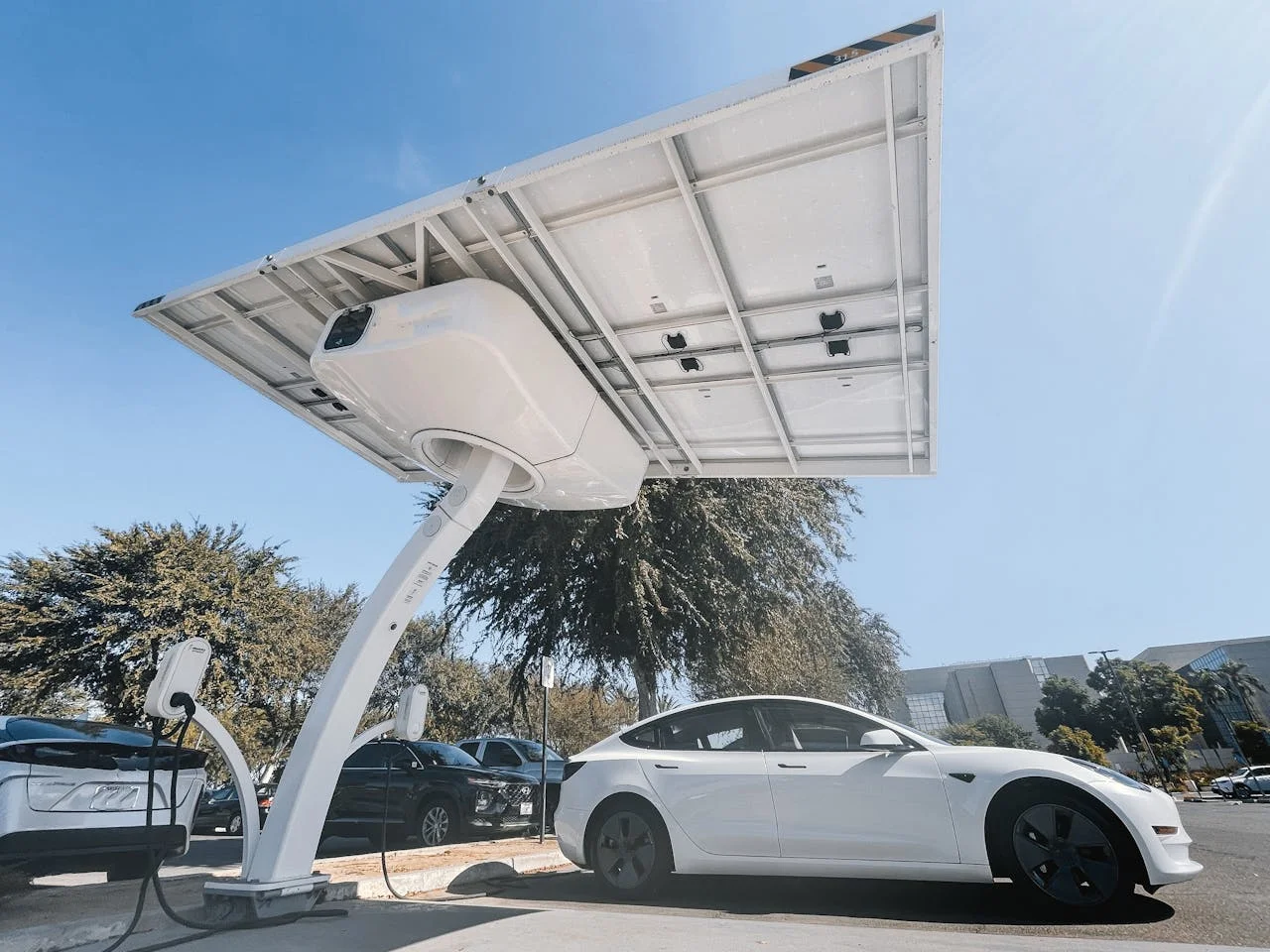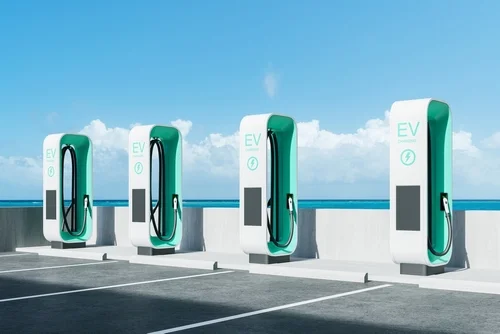Electrification: Transitioning US Industries to Clean Energy
17 Sept, 20256 mins
Not too long ago, electrification was something most people associated with history books, the lightbulb, the telephone, the first transmission lines stretching across cities. Today, though, what electrification means has shifted. It’s become a central piece in the conversation about climate action, clean technology and industrial reform.
What is Electrification?
At its simplest, electrification is about replacing equipment and processes that rely on fossil fuels with ones that run on electricity. But that short definition doesn’t quite capture the scope of what’s happening now.
We’re not just talking about plugging in an EV or switching to electric stoves at home. What electrification means is about overhauling entire sectors of the economy, steelmaking, chemical manufacturing, cement production and doing so in a way that slashes emissions and makes economic sense in the long run.
So, why now? Why is this push toward clean electrification happening with such urgency?
For one, the math is unavoidable. Industrial activity in the U.S. consumes about 35% of total end-use energy, and a big chunk of that energy still comes from fossil fuels. According to the EPA, around 30% of greenhouse gas emissions in the U.S. stem from industry. That’s more than cars and buildings. And while it has been relatively easy to electrify homes or shift to renewables for power generation, doing the same for industry has proven to be much tougher. Until recently.
Tech Is Catching Up
Now, thanks to advances in power electronics, battery storage and electronic power design, the tools exist to electrify even the toughest industrial tasks. Electric arc furnaces (or EAFs) are already making headway in steel production. Instead of relying on coal-fired blast furnaces, companies like Nucor have leaned into electric methods, not just because they’re greener, but because they can be more efficient and flexible.
The automotive sector has helped push this tech forward, too. The boom in auto tech electrification has had ripple effects across manufacturing. EVs require high-efficiency motors and advanced control systems. That same technology is now showing up in factories. The overlap between vehicle innovation and industrial power systems isn’t accidental; they feed each other in a symbiotic process.
And there are other examples. Electric boilers, industrial heat pumps, and induction heating are all replacing fossil-fueled alternatives in sectors like food processing and materials manufacturing. In some cases, these systems are already more economical than legacy tech, especially when powered by excess renewable energy.
But Let’s Talk About the Numbers
This transition isn’t just theoretical. There are some serious stats to back it up.
For starters, the U.S. manufacturing sector alone consumes over 2400 trillion BTUs of energy. A massive chunk of that, about 880 trillion BTUs, still comes from natural gas. That’s a big hill to climb.
At the same time, electricity use in industry is already at 1.02 trillion kWh and is expected to rise quickly as more processes go electric. According to Global Efficiency Intelligence, widespread industrial electrification could save more than 663 petajoules annually by 2050. That’s an enormous chunk of energy and emissions, taken off the board.
The number of energy-intensive facilities across the U.S. is over 4400 these days. Many are in chemicals, cement, steel and pulp & paper sectors that have traditionally been tough to decarbonize. But as we see tech assist in our fight against carbon emissions, it looks like these numbers will slowly transition from fossil energy into renewable electrical processes.
The Grid Question
All of this electricity has to come from somewhere, of course. That’s where things get a bit more complicated.
Yes, electrification can reduce carbon, if the electricity powering those systems is clean. That’s why clean technology like wind, solar, hydro and geothermal is such a critical piece of the puzzle.
But even with clean sources growing fast, the grid still needs a serious upgrade. The National Renewable Energy Laboratory estimates we’ll need between $330 billion and $740 billion in grid investments by 2035 just to keep up with demand. That includes transmission lines, storage capacity and modern control systems.
And it’s not just about adding capacity. Flexibility matters too. As more renewables enter the mix, being able to balance loads and manage demand becomes crucial. That’s where smart electronic power design and adaptive systems come in, the kind that can handle changes in power supply and usage on the fly.
What’s Holding Us Back?
Despite the tech and policy support (more on that in a second), many barriers remain.
First, there’s the cost. High upfront investments are still a sticking point for many facilities. While systems like heat pumps and electric boilers may offer lower operating costs over time, the initial price tag can be a deterrent, especially for small or midsize manufacturers.
Then there’s the challenge of high-temperature processes. Some industrial operations need heat well above 1000°C. Right now, only a handful of emerging technologies are being tested for those kinds of extremes, and most are still in pilot stages.
Awareness is also an issue. Many industrial operators simply aren’t familiar with the options available, or they assume electric alternatives won’t deliver the same performance. That’s starting to change, but slowly.
There’s also a growing talent challenge. As more companies adopt electrification technologies, the need for skilled professionals is outpacing supply. Fruition Group is helping close that gap by connecting organizations with top vetted talent, people who understand the systems, the stakes, and how to make it all work at scale.
Policy Is Playing Catch-Up
Fortunately, policymakers are beginning to recognize that industry is a critical piece of the decarbonization roadmap. The Inflation Reduction Act (IRA), passed in 2022, directed over $400 billion toward clean energy initiatives, including tax credits and funding for industrial upgrades.
The Department of Energy also released an Industrial Decarbonization Roadmap that lays out a strategy emphasizing efficiency, electrification and low-carbon fuels. It includes up to $104 million in investments for technologies that help shift industrial processes away from fossil fuels.
Other agencies are exploring time-of-use pricing, performance incentives and grid service compensation, all aimed at making clean electrification more accessible and economically attractive.
What’s Next?
Looking forward, there’s a clear trajectory. According to the IEA, electricity’s share of final energy use in the U.S. could rise from 20% in 2022 to over 27% by 2030. For industry, that means electrification will play a starring role.
There’s even more optimism beyond that. If current trends hold, the US could see up to 62% economy-wide emission reductions by 2035, with clean electrification doing a lot of the heavy lifting.
Is it going to be easy? No. But with 480 million metric tons of emissions potentially on the line and benefits that stretch across energy savings, air quality and operational performance, it’s a shift that makes both climate and business sense.
Conclusion
Electrification may sound just like a keyword thrown around in board meetings, but it’s really about modernizing our industrial backbone. From EAFs to heat pumps, from automotive tech to advanced power electronics, we’re entering a new era of industrial innovation, and it’s electric.
As industries catch up, policymakers dig in and technologies mature, the idea of a cleaner, more efficient industrial sector starts to look not just possible but inevitable.
It won’t happen overnight. But step by step, facility by facility, electrification of clean energy is reshaping how we build, produce and power the world around us.



